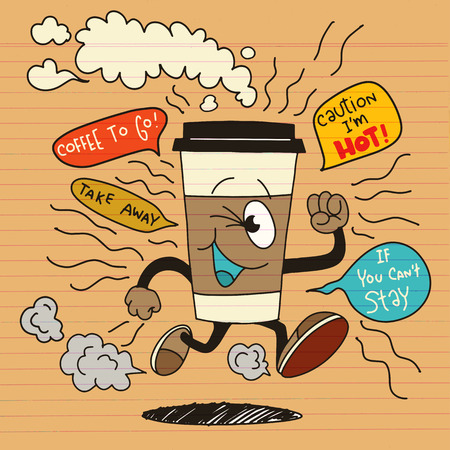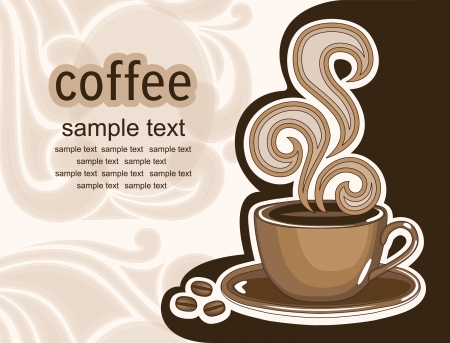Understanding Coffee Extraction
For many in Britain, the gentle hum of a coffee machine has become as familiar as the whistle of a kettle. As our high streets fill with independent cafés and home brewers experiment with beans from far-flung corners of the world, understanding coffee extraction is key to elevating your daily cup. But what exactly does “coffee extraction” mean? Put simply, it’s the process where water draws out flavours, oils, and aromas from ground coffee. This seemingly simple act is actually a delicate balance of science and art—one that determines whether your brew is rich and satisfying or lacklustre and bitter. In a country where tea once reigned supreme, Britain’s embrace of specialty coffee culture means more people are taking an interest in what goes into their morning flat white or espresso. By getting to grips with extraction, you’ll not only taste the difference but also join a growing community of enthusiasts who appreciate coffee as both ritual and craft.
2. The Science at Play: Water Meets Coffee
When brewing coffee, you’re essentially conducting a science experiment in your own kitchen. Think of it as a bit like making the perfect cup of tea – except the variables are slightly different. At its heart, extraction is about how water draws out flavours from ground coffee. Let’s break down the main factors that make all the difference to your morning brew.
Water Temperature: Not Too Hot, Not Too Cold
Just as you wouldn’t steep your Yorkshire tea in boiling water for too long, coffee has its own sweet spot. Water that’s too hot (above 96°C) can scorch the grounds, resulting in bitterness – imagine overcooking your Sunday roast. Too cold (below 90°C), and you’ll under-extract, leaving your cup flat and lifeless, much like a weak builder’s brew. Aim for that Goldilocks zone between 90–96°C for a balanced extraction.
Grind Size: Getting Granular
The grind size is a bit like choosing the right bread for your bacon sarnie: it really does matter. If your coffee is ground too fine, water struggles to pass through, leading to over-extraction and bitterness – akin to squeezing through the Tube at rush hour. Too coarse, and water flows too quickly, missing those lovely flavours – like running through a village fete without stopping for cake. Matching your grind size to your brewing method makes all the difference.
| Brewing Method | Recommended Grind Size | Analogy |
|---|---|---|
| Espresso | Fine (table salt) | Packed like Oxford Circus at Christmas |
| French Press | Coarse (sea salt) | Spacious as a country pub garden |
| Pourover/Filter | Medium (granulated sugar) | Steady as a rainy British afternoon |
Brewing Time: Patience Pays Off
If you’ve ever rushed a cuppa only to find it watery or stewed it till it’s undrinkable, you’ll know timing matters. For coffee, longer contact with water means more extraction. Brew too quickly and the result is sour; wait too long and it turns bitter – much like overstaying your welcome at a mate’s flat. Find the right time for your chosen method and you’ll be rewarded with balance in every sip.

3. Choosing the Right Kit
For anyone starting their journey into the world of coffee extraction in the UK, selecting the right brewing equipment is just as important as understanding the science behind it. Luckily, there’s a range of beginner-friendly options available on the British high street and online. The classic cafetière (French press) is a staple in many UK homes; it’s affordable, simple to use, and allows you to control brew time—a crucial element in extraction. Its metal mesh filter means more oils and fine particles end up in your cup, resulting in a rich, full-bodied flavour that showcases the coffee’s natural character.
If you prefer a cleaner cup with brighter notes, a filter machine or drip brewer may be your go-to. These are widely available from trusted UK brands and retailers like John Lewis or Currys. They automate much of the brewing process, making them ideal for beginners seeking consistency. The paper filters used in these machines absorb some of the oils and trap finer particles, which gives your coffee a lighter mouthfeel and highlights acidity and delicate flavours—perfect for those who enjoy exploring single-origin beans.
For those keen on experimenting without breaking the bank, the AeroPress has gained a cult following across Britain for its versatility and ease of use. It’s compact, affordable, and offers control over variables such as brew time, temperature, and pressure. This flexibility lets you tinker with extraction to find your preferred balance between strength and clarity.
No matter which method you choose, remember: each interacts with the extraction process differently. The cafetière emphasises body and depth; filter machines deliver clarity and brightness; while an AeroPress sits somewhere in between, allowing for personalisation. As you grow more confident, you might wish to experiment with grind sizes or invest in a burr grinder to further refine your brews—just another step on your journey towards mastering coffee extraction at home.
4. Dialling In: Key Variables Explained
Getting your coffee spot on is much like perfecting a classic British brew — it’s all in the details. When we talk about “dialling in” your coffee, we’re referring to fine-tuning several essential variables to ensure each cup is consistently delicious. Here’s a practical look at the main factors, explained in everyday British terms, with tips you can try at home.
Grind Size
The size of your coffee grounds is rather like choosing between granulated or caster sugar for baking. A finer grind (think instant coffee texture) extracts flavours more quickly, ideal for espresso machines, while a coarser grind (like sea salt) suits cafetières or filter brews. If your cup tastes harsh or bitter, your grind may be too fine; if it’s weak or watery, try going a tad finer.
Dose
“Dose” simply means how much coffee you use. Most Brits start with around 18 grams for a double shot of espresso — roughly two tablespoons. Too much coffee can make your espresso overly strong and muddy; too little and it’ll taste thin and lacklustre. A digital kitchen scale helps keep things consistent.
Water Temperature
Think of water temperature as you would brewing the perfect cuppa — too hot and you scald the leaves (or in this case, the beans), too cool and you’ll barely extract any flavour. The sweet spot for most brews is between 92°C and 96°C (about just off the boil). Anything below 90°C risks under-extraction, leading to sour notes; over 98°C and you might end up with burnt flavours.
Brew Time
Brew time is simply how long your water mingles with the coffee. For espresso, aim for about 25-30 seconds; for cafetière, give it a leisurely four minutes before pressing down. Brew too quickly and your cup will be sharp and acidic; too slowly and it’ll taste overly bitter.
Quick Reference Table: Key Extraction Variables
| Variable | Espresso | Cafetiere (French Press) | Filter |
|---|---|---|---|
| Grind Size | Fine (table salt) | Coarse (sea salt) | Medium (sand) |
| Dose per Cup | 18g | 15g/250ml water | 12g/200ml water |
| Water Temp | 92–96°C | 92–96°C | 92–96°C |
| Brew Time | 25–30 sec | 4 min | 2–3 min |
The beauty of dialling in lies in experimentation — much like finding your favourite biscuit to dunk in tea! Adjust these variables one at a time to suit your taste buds. Before long, you’ll be crafting café-quality coffee right from your own kitchen counter.
5. Common Pitfalls and How to Avoid Them
If youve ever found yourself standing in a bustling London café, watching a barista pour what looks like liquid gold into a cup, you might wonder why your own kitchen attempts sometimes yield murky disappointment. The journey from bean to brew is peppered with pitfalls, but recognising these classic beginner mistakes can make all the difference.
Over-Extraction: When Patience Goes Too Far
Picture this: youre at home on a rainy Manchester morning, craving a rich cup of coffee. In pursuit of strength, you let the water linger over the grounds just a touch too long. The result? A bitter, astringent brew that lacks balance. Over-extraction occurs when water draws out not only the desirable flavours but also unwanted compounds. To avoid this, stick to recommended brew times—usually around four minutes for a cafetière or 25–30 seconds for espresso.
Tip:
Use a timer—many Brits swear by their trusty mobile alarm for this very reason!
Under-Extraction: Cutting Corners on the School Run
Perhaps youre dashing out the door in Leeds, hoping to grab a quick cup before the school run. You cut the brew short to save time and end up with a sour, thin coffee lacking depth. Under-extraction happens when water doesn’t have enough contact with the grounds to extract all the nuanced flavours. To remedy this, ensure your grind size matches your brewing method and give your coffee its due time.
Tip:
If your coffee tastes weak or overly acidic, try grinding finer or increasing brew time slightly.
Temperature Troubles: Not Just an Issue for British Weather
The ideal temperature for extraction sits between 90–96°C. Use water thats too hot (straight off the boil) and you risk burning the grounds; too cool and you’ll miss out on those complex notes beloved in artisan roasters from Edinburgh to Brighton.
Tip:
Let your kettle rest for about 30 seconds after boiling before pouring over your grounds.
Grind Size Misjudgement: The Devil’s in the Detail
Whether enjoying a flat white in Shoreditch or an Americano in Bristol, grind size is often overlooked by newcomers. Too coarse and your coffee will be weak; too fine and it’ll turn bitter. Invest in a decent burr grinder and play around until you find your sweet spot.
Final Word
Even seasoned baristas at your favourite local spot started as beginners. Embrace experimentation and don’t be afraid to ask questions—after all, British coffee culture thrives on community and sharing tips over a cuppa.
6. Finding Your Flavour: Experimenting at Home
If youve made it this far, you’re well on your way to mastering the art and science of coffee extraction. But here’s the real beauty—there’s no ‘one size fits all’ when it comes to your daily brew. Every Brit has their own morning rituals, and finding your signature cup is a journey worth savouring. So, how do you start experimenting at home?
Start Simple: Tweak One Variable at a Time
Don’t feel pressured to overhaul everything at once. Begin with your usual method—be it cafetière, Aeropress, or trusty moka pot—and change just one thing: perhaps grind size, water temperature, or brew time. For instance, try grinding a touch finer for your next French press and notice if it brings out more body in your cup.
Keep Notes Like a True Enthusiast
Grab a notepad (or use your phone) and jot down what you tried and how it tasted. Was it brighter? Smoother? More robust? This simple step will help you connect technique with taste—a very British approach to perfecting your tea, only now it’s coffee!
Explore Local Roasts and Beans
Britain’s artisan coffee scene is thriving, from Cornwall to Edinburgh. Try beans from independent roasters or explore blends that reflect local tastes. You might discover you prefer a light roast with citrus notes for breakfast or something richer for a midday pick-me-up.
Share and Compare
Coffee is about community as much as chemistry. Invite mates over for a tasting session or swap tips with colleagues at work. Sometimes, someone else’s favourite method could become yours too.
Trust Your Palate
The most important advice? Trust your own taste buds! There are plenty of guides and gadgets out there, but your perfect cup is the one that puts a smile on your face each morning. Enjoy the process of discovery—it’s as quintessentially British as a rainy afternoon spent indoors with a fresh brew.

